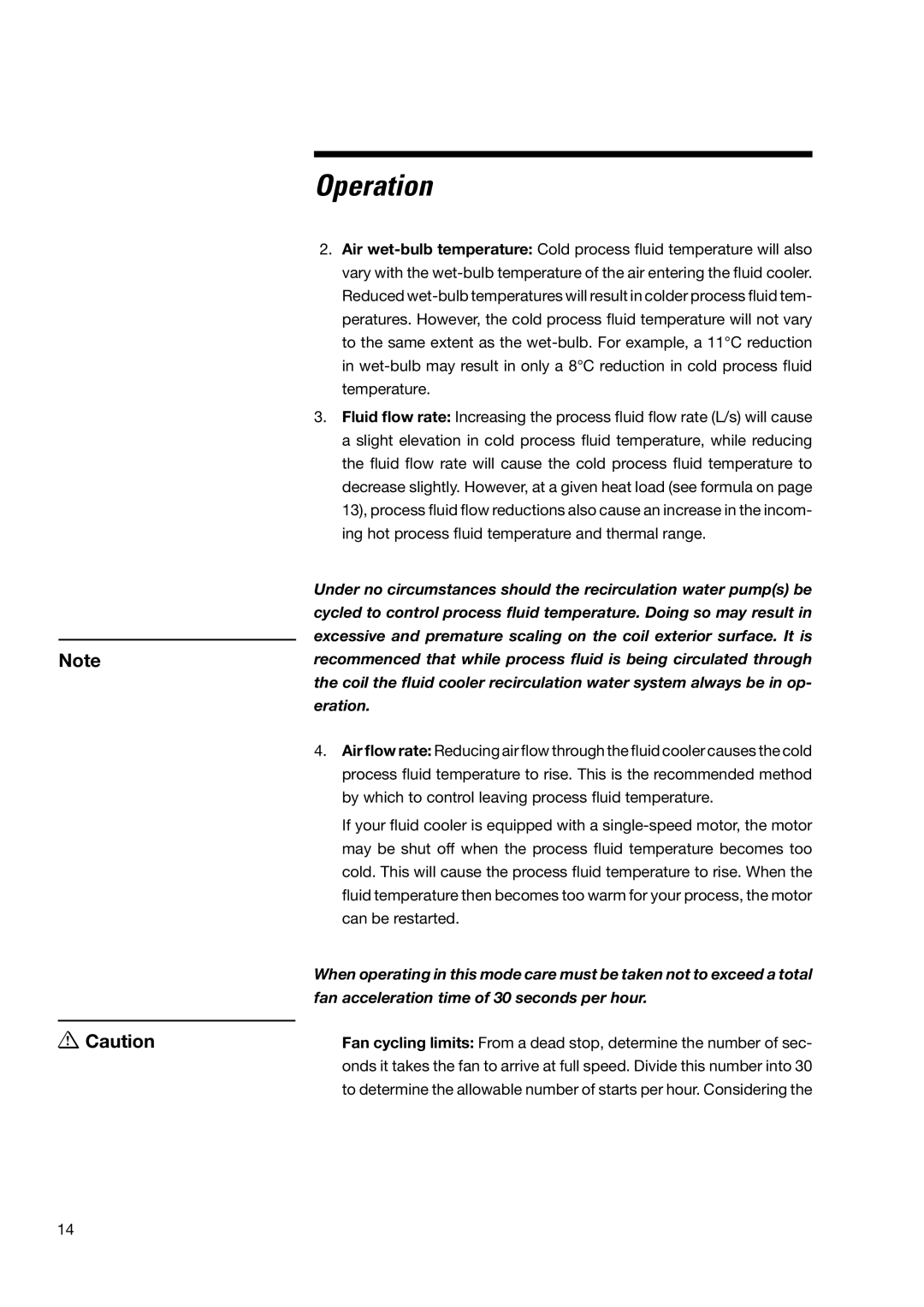
Note
![]() Caution
Caution
Operation
2.Air
3.Fluid flow rate: Increasing the process fluid flow rate (L/s) will cause a slight elevation in cold process fluid temperature, while reducing the fluid flow rate will cause the cold process fluid temperature to decrease slightly. However, at a given heat load (see formula on page 13), process fluid flow reductions also cause an increase in the incom- ing hot process fluid temperature and thermal range.
Under no circumstances should the recirculation water pump(s) be cycled to control process fluid temperature. Doing so may result in excessive and premature scaling on the coil exterior surface. It is recommenced that while process fluid is being circulated through the coil the fluid cooler recirculation water system always be in op- eration.
4.Air flow rate: Reducing air flow through the fluid cooler causes the cold process fluid temperature to rise. This is the recommended method by which to control leaving process fluid temperature.
If your fluid cooler is equipped with a
When operating in this mode care must be taken not to exceed a total fan acceleration time of 30 seconds per hour.
Fan cycling limits: From a dead stop, determine the number of sec- onds it takes the fan to arrive at full speed. Divide this number into 30 to determine the allowable number of starts per hour. Considering the
14
